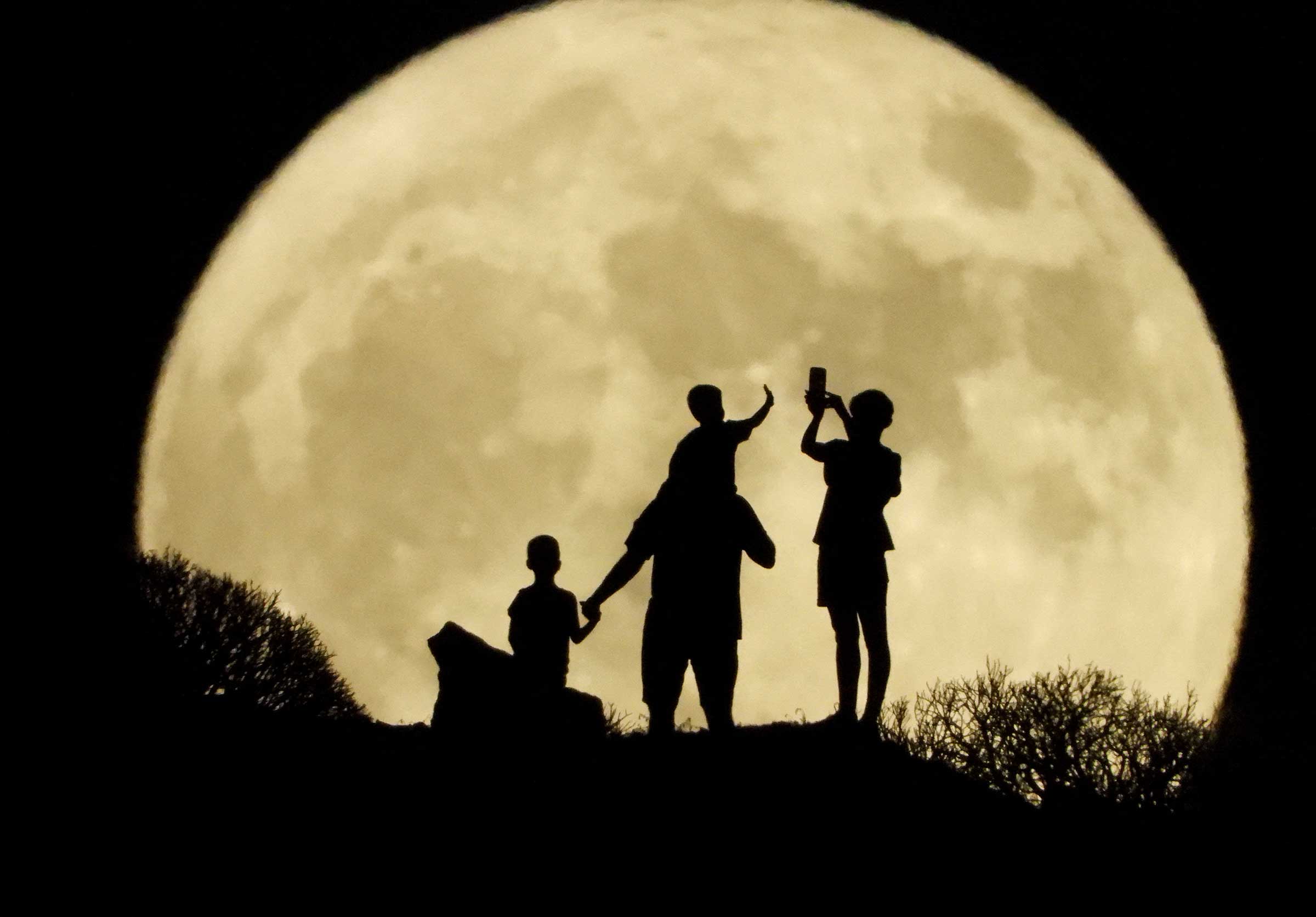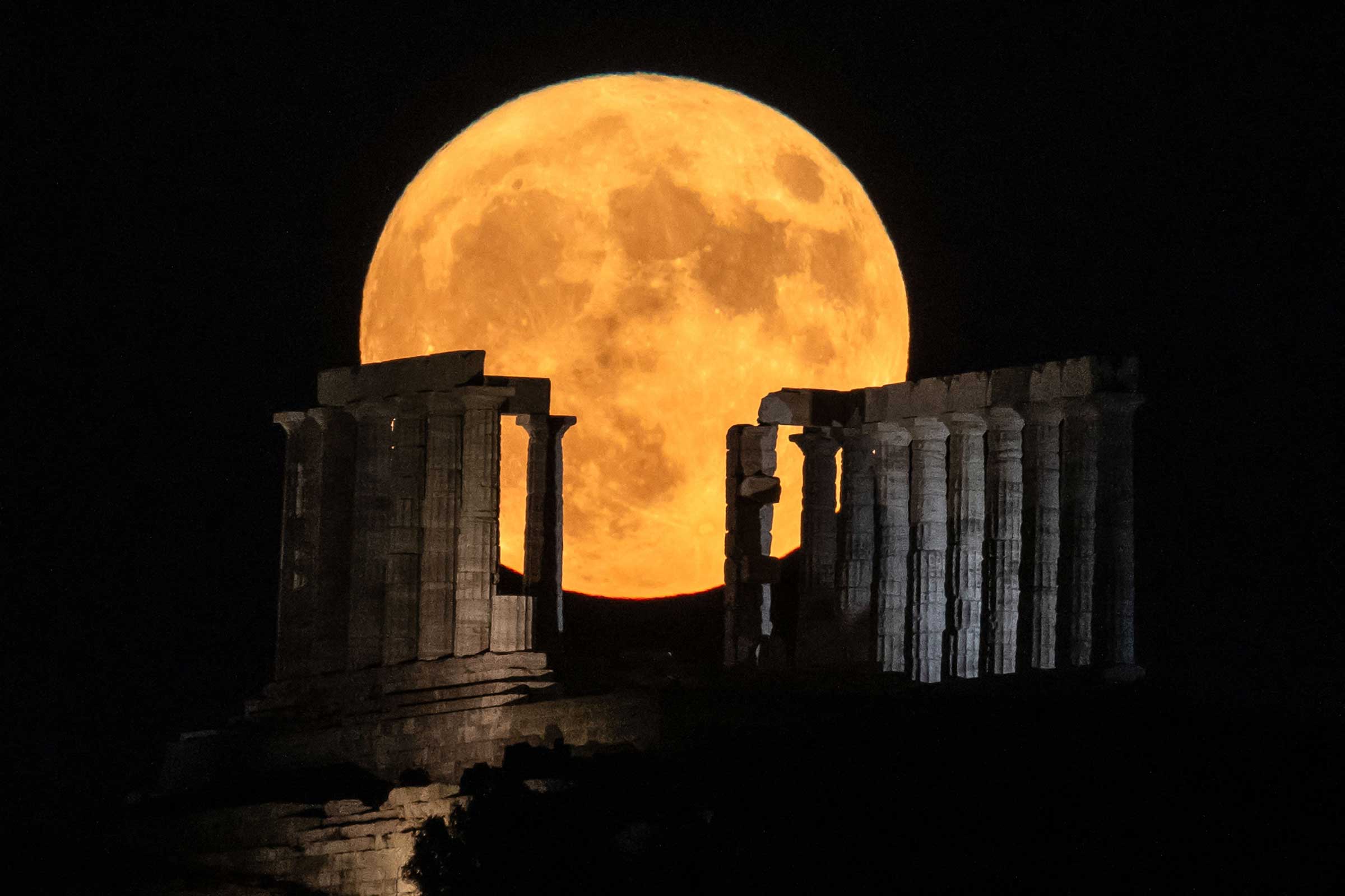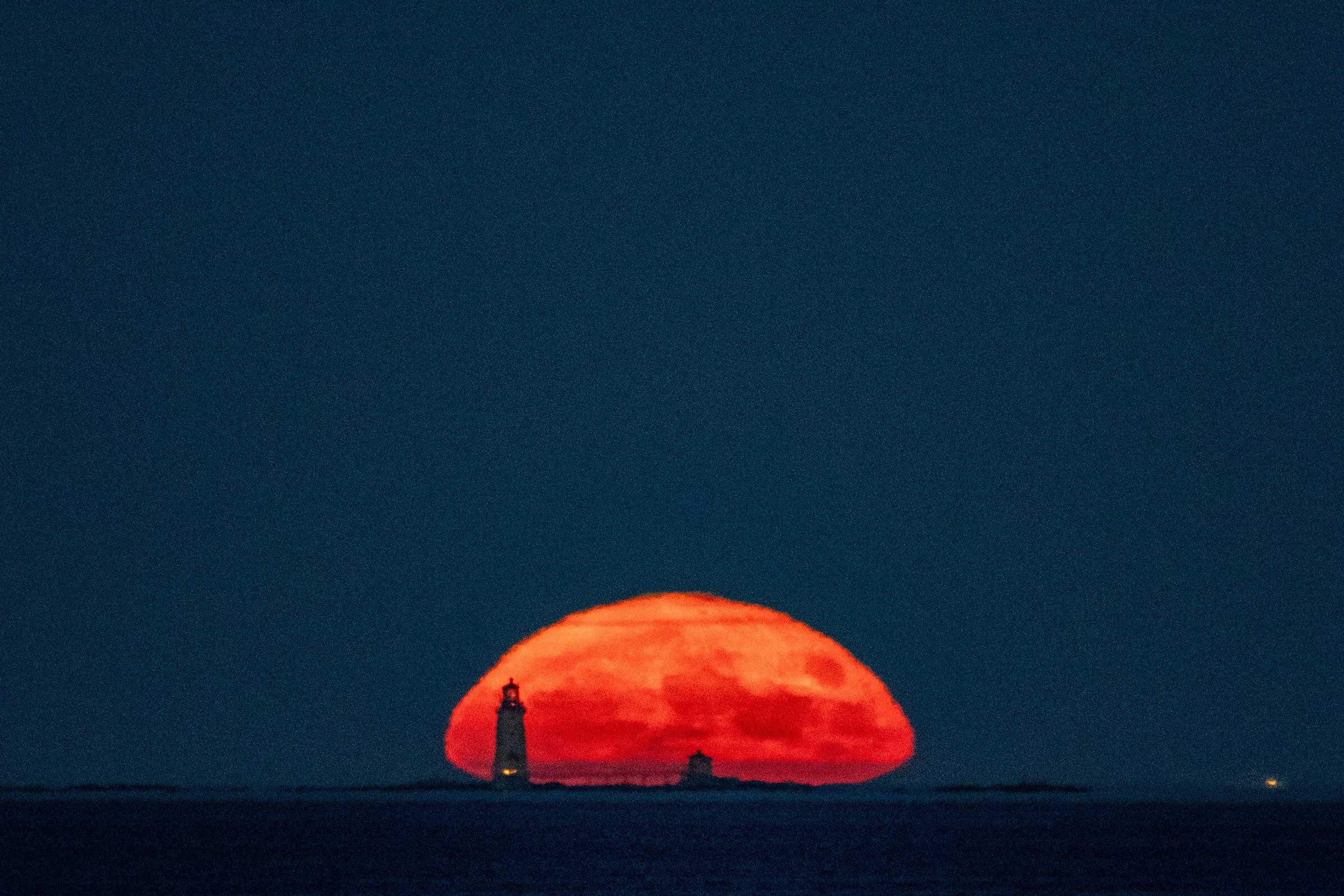The Earth and the moon snuggled up close last night—at least by cosmic standards. The two worlds were just 357,311 km (222,023 mi.) apart on the evening of Aug. 1. That represents the perigee—or low point—in the moon's elliptical orbit around our planet. The apogee—or high point—is 405,500 km (253,000 mi.). Not only was the moon close, it was also full—a combination that gives rise to a so-called supermoon, one which appears 30% brighter and 14% larger than an ordinary full moon does at a more distant remove.
More From TIME
A bigger, brighter moon always brings out star gazers and photographers, as this collection of images from yesterday's cosmic spectacular illustrates. If you missed the great show, no worries. This year is a big one for supermoons. In addition to yesterday's, there was one on July 3, and there are two more to come, on Aug. 30 and Sept. 28. The Earth and moon have been partners in the sky for 4.5 billion years. That long relationship can often yield things of great beauty.









More From TIME
More Must-Reads from TIME
- Cybersecurity Experts Are Sounding the Alarm on DOGE
- Meet the 2025 Women of the Year
- The Harsh Truth About Disability Inclusion
- Why Do More Young Adults Have Cancer?
- Colman Domingo Leads With Radical Love
- How to Get Better at Doing Things Alone
- Michelle Zauner Stares Down the Darkness
Write to Jeffrey Kluger at jeffrey.kluger@time.com
